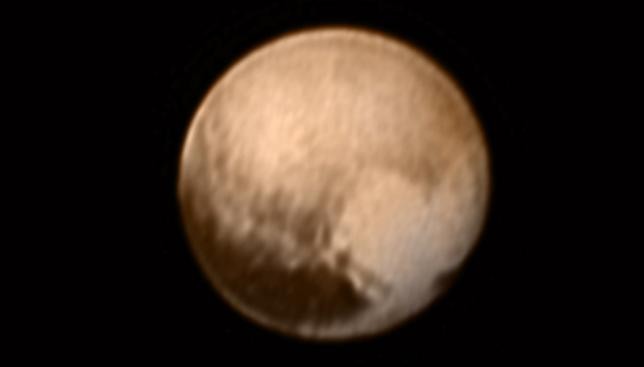Pluto's frozen plain, which is vast and craterless, seems to be no more than 100 million years old based on the newly released close-up image of the dwarf planet.
Possibly still being shaped by geologic processes, Pluto's frozen plain is located north of the icy mountains of the dwarf planet, according to the latest data from the New Horizons spacecraft of NASA.
Pluto's frozen plain is in the center-left of the heart feature, which was unofficially called Tombaugh Regio or Tombaugh Region. It was after the late Clyde Tombaugh, the astronomer who discovered the dwarf planet in 1930.
In addition, Pluto's frozen plains display dark streaks appear to be aligned in the same direction. It is likely that winds blowing across the frozen surface have produced the streaks, which are a few miles long.
As observed by the New Horizons Particles and Plasma team, the solar wind is stripping Pluto's atmosphere, a region of cold, dense ionized gas tens of thousands of miles away from the dwarf planet.
The Southwest Research Institute's (SwRI) New Horizons principal investigator Alan Stern said that although they have only scratched the surface of their Pluto exploration, it appears that "the best was saved for last" in the initial reconnaissance of the solar system.
Currently, while the New Horizons spacecraft is more than two million miles away from Pluto as it enters the next phase of its Kuiper Belt journey, the majority of its time will be spent downlinking data back to Earth, USA Today has learned.




























